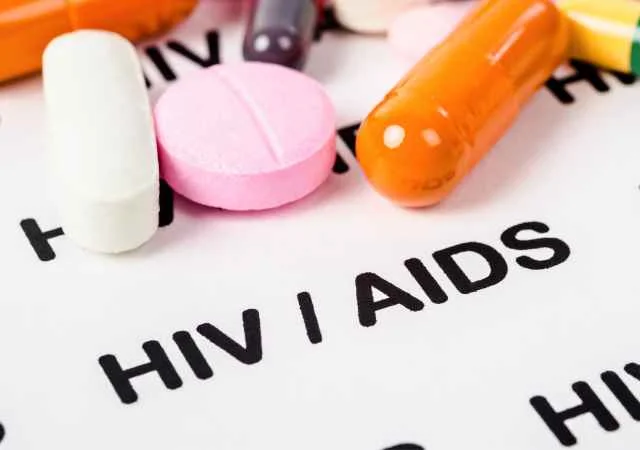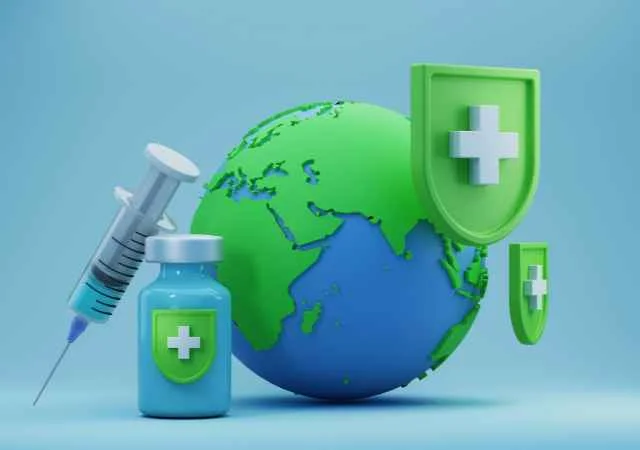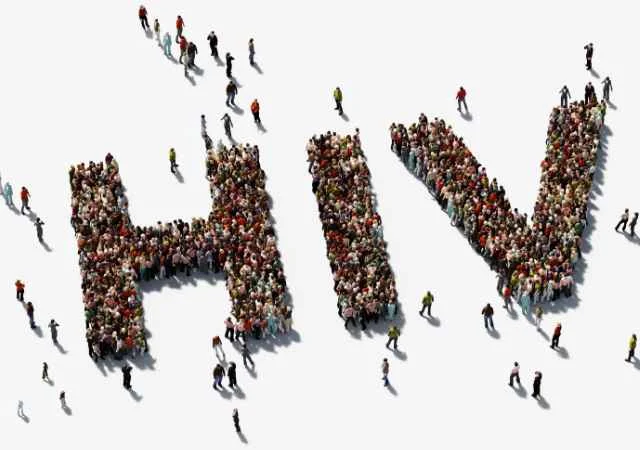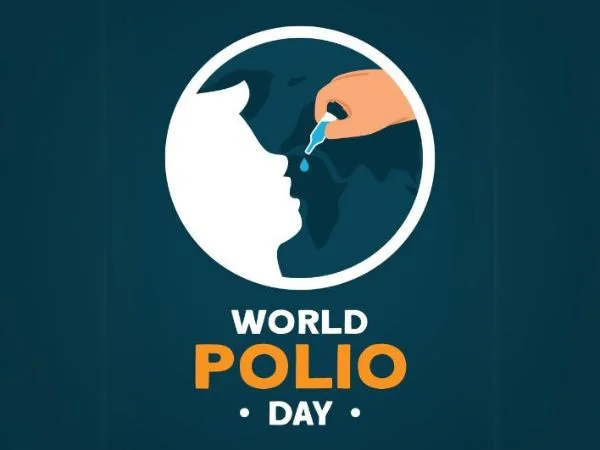The HIV/AIDS epidemic is still prevalent among millions around the world. At present, it remains that, as the WHO[1] reports, a person around the world becomes infected with HIV every 40 seconds. Facts like these are disconcerting, they point to a critical need to stop the disease. It would definitely fight this problem and provide the overall information related to HIV/AIDS, which is high growing, so the HIV AIDS Project aims at educating people regarding the causes behind HIV and its spread along with the methods that must be adopted in order to prevent it. By trying to minimize the emergence of new cases, and by preventing it, and creating an effective information dissemination campaign, the project contributes to bettering the life of all those living with HIV/AIDS. This is critical in the fight against the epidemic worldwide.
What is HIV/AIDS?

HIV stands for Human Immunodeficiency Virus. A virus that attacks the body’s immune system, which is the part of the body supposed to protect it from infections. When someone has HIV, one becomes prone easily to numerous diseases, thereby HIV helps speed up the stage towards AIDS, which is the final and deadliest stage of HIV, AIDS meaning, Acquired Immunodeficiency Syndrome. At this stage, the immune system becomes very weak, and a person is not in any position to protect himself against infections or cancer.
HIV was discovered in the 1980s, and it has reached millions of people worldwide. However, medical science has been developed enough so that HIV can be controlled. The number of people infected with HIV may lead a healthy life like other humans if they are taken proper care of under the treatment.
Of course, there are a few people who have the extremely rare genetic mutation of CCR5-delta32. This actually prevents the virus from entering the cells in those individuals, so they cannot get HIV. The HIV AIDS Project is a way to teach students about the presence of HIV, its impact on the immune system, and the significance of prevention. For further information, see the CDC and UNAIDS sites.
Causes and Transmission of HIV

HIV is caused by a retrovirus, hence it is one of the kinds of viruses that may incorporate itself into the DNA of a human’s cells; thereby making it difficult for the body to fight off infections. The virus after entering the body, begins attacking the immune system in the body, which serves as the body’s defense mechanism against diseases. HIV is, therefore mainly spread through the following ways:
- Unprotected sex: This includes vaginal, anal and oral sex, though most people do not know that with open sores or bleeding gums that performing oral sex can also transfer the virus.
- Blood transfusions: Throughout history, HIV virus could be transferred through blood transfusions; modern protective measures are highly effective.
- Sharing needles: Using needles or other drug equipment that has been used by another person can transfer HIV.
- Mother-to-child: A mother with HIV can transfer the virus to her baby while pregnant, during delivery, or through breast feeding.
It’s worth noting that HIV is not transmitted through casual contact such as hugging, shaking hands or sharing food. It’s neither possible to get it through an insect bite. A report[2] in The Lancet in 2020 put the socially held stigma surrounding HIV into perspective. Being fearful of stigma often deters people from getting tested or seeking treatment, which makes the prevention even more difficult. HIV AIDS Project has unmasked the most important details concerning how HIV is spread and also the obstacles related to the prevention of HIV. And knowledge of these facts is imperative to fight the spread of HIV.
What are the Various Prevention Strategies for HIV/AIDS?
We can prevent HIV with proper education, early diagnosis, and effective treatment. And this is how to prevent HIV from spreading:

Primary Prevention-Stop HIV from Source
- Awareness Campaign: A single most important message conveyed is U=U: Undetectable = Untransmittable. When the person living with HIV adheres to their treatment, then that person will not have the virus in detectable levels, and they won’t be able to transmit it to others.
- Safer sex practices: Undoubtedly the easiest and surest protection for HIV is the use of condoms during sex. A second method is PrEP, short for pre-exposure prophylaxis, a medicine that people who are at higher risk of getting infected with HIV can take to prevent acquiring it.
- Male circumcision: It is proved that circumcision may also reduce the HIV infection risk in men. To date, some countries promote the use of circumcision as an intervention.
Secondary prevention ensures that people living with the HIV condition live healthy and prevent further spread. - Early identification and treatment: The sooner the person tests for the HIV, the sooner he begins treatment, this minimizes the risk of the virus from spreading to other people.
- Antiretroviral Therapy: is the treatment that helps in controlling the virus. It does allow the virus to be maintained at such low levels in the blood that it cannot be transmitted and helps keep the immune system robust. A new drug, Cabotegravir[3], an injectable medicine injected only once every month has recently been approved in 2021, offering a much more comfortable way of living for people with HIV.
- Global Success Stories: Through education, testing, and treatment initiatives, the rate of the spread of the HIV infections has been slowed considerably. HIV AIDS Project advocates for all measures from education to new treatments that will greatly help curb the spread of the infections around the world. For more information, check out some credible websites like UNAIDS.
Increasing Awareness
Increasing awareness is critical in diminishing stigma, encouraging testing, and championing healthy habits that prevent the virus. The more we talk openly about HIV, the less fear and misunderstanding there will be regarding it. Most current creative campaigns today are utilizing modern tools when reaching their target audience, and ideally, the younger generations. Social media influencers also help promote safe practice behaviors. There are even campaigns using virtual reality to bring the impact of HIV upon peoples’ lives to life through a more engaging tool. One of the most popular campaigns is The Red Ribbon Project[4], which is working on normalizing conversation and reducing the stigma often attached to HIV in our society.
Role of Schools and Workplaces: Schools and work places can play a pivotal role in all these awareness programs as the education regarding HIV/AIDS could be included in school curriculums and wellness programs at the place of work to make the person know how to protect him or her and others.
According to recent studies[5], awareness programs are helping people get tested and get treated earlier, which will help reduce HIV. The HIV AIDS Project would support efforts like these: grassroots campaigns raising awareness, for example, and bringing much-needed information to underserved communities.
Challenges and the Future

Although there have been various advancements in the campaign against HIV, there are still some challenges:
- Stigma: Many people with HIV suffer from stigmatization, making many shy away from getting help or opening their mouths to discuss anything about their condition.
- Limited availability of healthcare: In poorer areas, people simply do not have access to the treatment and care they require to maintain HIV.
- Drug Resistance to Antiretroviral Drugs: Some HIV sub-types have developed resistance to specific antiretroviral drugs. They are difficult to treat using such drugs.
But then, more developed methods like CRISPR[6] are emerging that will, one day, enable them to alter the human DNA in a way that will render HIV out of the system. The WHO has promised an ambitious goal at the end of AIDS as a public health threat by 2030. It calls for the provision of HIV treatment to everyone followed by prevention of the infections worldwide. The project of HIV AIDS has aimed on lesser issues including the different new research and technology in efforts of prevention and treatment which makes us closer to a world free of HIV.
Conclusion
In this article, we have discussed the significance of the knowledge regarding HIV and AIDS, routes of transmission of the virus, and strategies that can be used to prevent it. Furthermore, we looked at the challenges involved, including social stigma and lessened healthcare accessibility, as well as new exciting avenues in treatment and advancement in the scientific basis of exploration, like the possibility of CRISPR technology.
The HIV AIDS Project draws hope and action in the fight against HIV/AIDS, inspiring every one of us to do our bit in spreading the message and supporting organizations in various fields.
Remember how Nelson Mandela said: “It always seems impossible until it’s done.” Together, we’ll help end the HIV/AIDS epidemic and make a world where every single person will be able to access care and support-join the movement today!
References
We value truthful content. 6 sources were referenced during research to write this content.
- HIV. (n.d.). HIV. Retrieved from https://www.who.int/data/gho/data/themes/hiv-aids
- Just a moment.. (n.d.). Just a moment.. Retrieved from https://journals.lww.com/aidsonline/fulltext/2008/08002/stigma_in_the_hiv_aids_epidemic__a_review_of_the.10.aspx
- Pinto, R. M., Hall, E., & Tomlin, R. (2023, January 20). Injectable Long-Acting Cabotegravir–Rilpivirine Therapy for People Living With HIV/AIDS: Addressing Implementation Barriers From the Start. Journal of the Association of Nurses in AIDS Care. Ovid Technologies (Wolters Kluwer Health). http://doi.org/10.1097/jnc.0000000000000386
- (n.d.). Government Degree College, Karvetinagaram. Retrieved from https://gdcknagaram.edu.in/support-service-overview.php
- (n.d.). HIV Testing | NIH. Retrieved from https://hivinfo.nih.gov/understanding-hiv/fact-sheets/hiv-testing
- Hussein, M., Molina, M. A., Berkhout, B., & Herrera-Carrillo, E. (2023, January 13). A CRISPR-Cas Cure for HIV/AIDS. International Journal of Molecular Sciences. MDPI AG. http://doi.org/10.3390/ijms24021563


